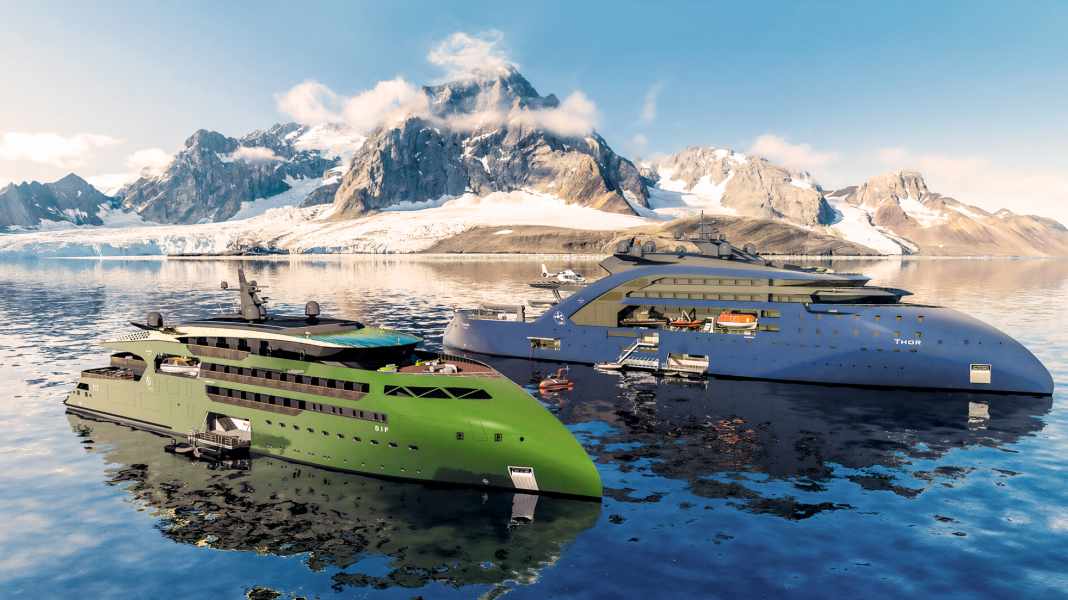
The Norwegian shipyard Ulstein confidently claims that it can solve the zero-emission challenge with the "Thor" project. The name of the 149-metre vessel with the patented X-Bow does not stand for the Nordic deity with the hammer, but for thorium. This is the name of a low-level radioactive metal that is more common than uranium - especially in China, India and Norway - and is used in molten salt reactors.
Thorium is dissolved in liquid salt. The subsequent chain reaction heats the salt and produces vapour, which drives a turbine and in turn generates electricity. This means that "Thor" could be used as a floating power charging station for battery-powered cruise ships, which Ulstein is also planning with the 100 metre long "Sif". That was the original idea. However, "Thor" also functions as a research vessel thanks to its helipad, firefighting equipment, workboats, AUVs, drones, laboratories and lecture theatre.
Opportunities and risks of thorium molten salt reactor technology
This not uncontroversial technology also appears to be interesting for yachts. It is worth taking a closer look at the opportunities and risks. US scientists conducted experiments with molten salt reactors back in the 1960s, albeit on a small scale and with uranium waste.
The problems: Firstly, the radioactive gas tritium escaped and minor corrosion damage occurred. New research projects are aimed at reducing nuclear waste, competitiveness and high safety standards relating to a possible risk of explosion or overheating of the reactor.
Read also:
With regard to final disposal, it should be borne in mind that although a reactor fuelled with thorium would produce less long-lived radioactive waste than one fuelled with uranium, this waste would radiate much more strongly and make transport and storage more difficult. China is conducting onshore research into reactors with a thermal capacity of two megawatts. The Scientific Services of the German Bundestag inform us that the development horizons of thorium molten salt reactors would not be long enough for them to be considered as an alternative for the safe provision of energy in the context of CO2 reduction.
The Ulstein shipyard has stated that the loading capacity of "Thor" has been scaled to cover the energy requirements of four expedition cruisers at the same time. Even the 149-metre supply vessel does not need to be refuelled.
The article first appeared in BOOTE EXCLUSIV 5/2022 and has been updated for the online version.
